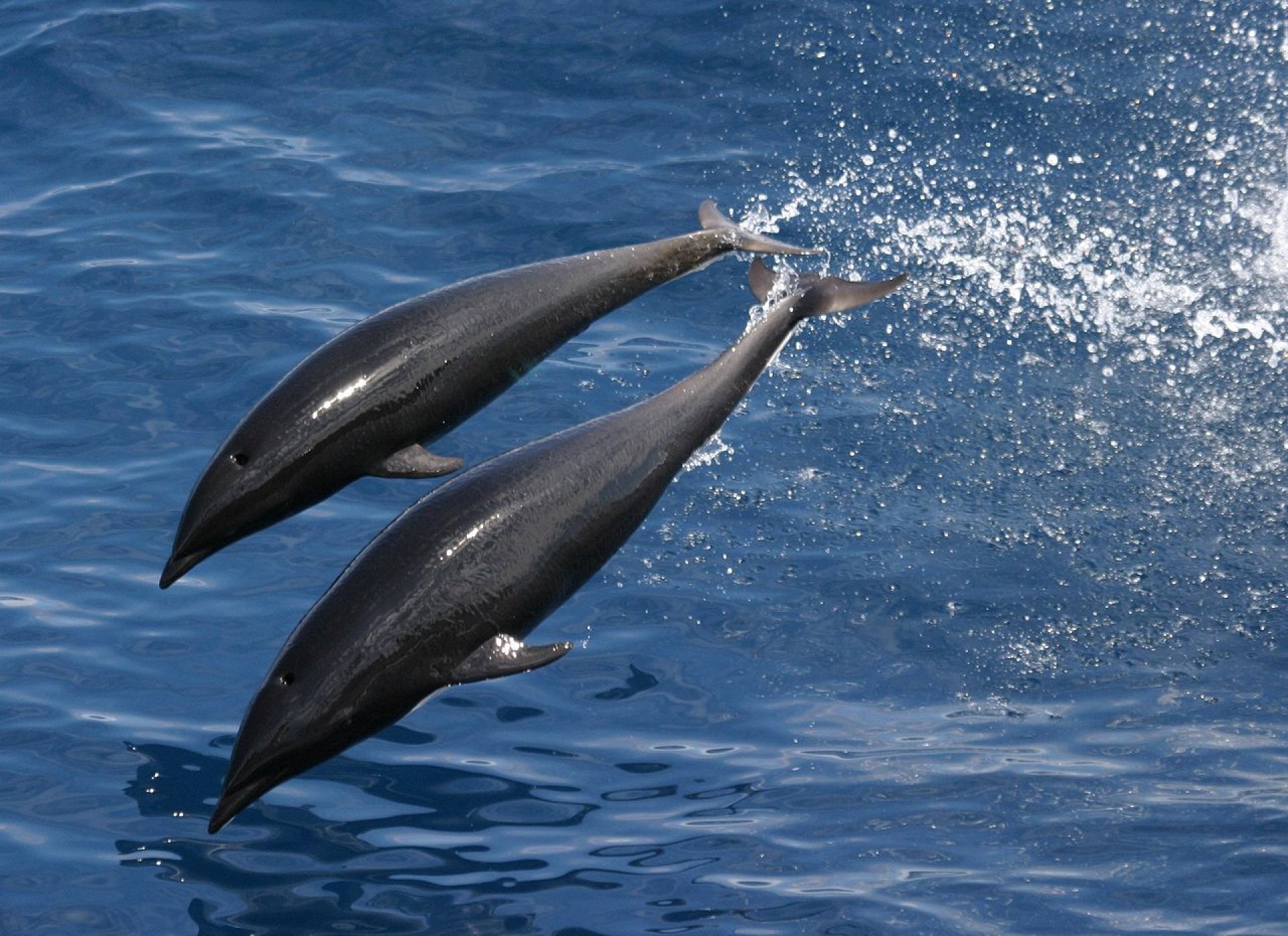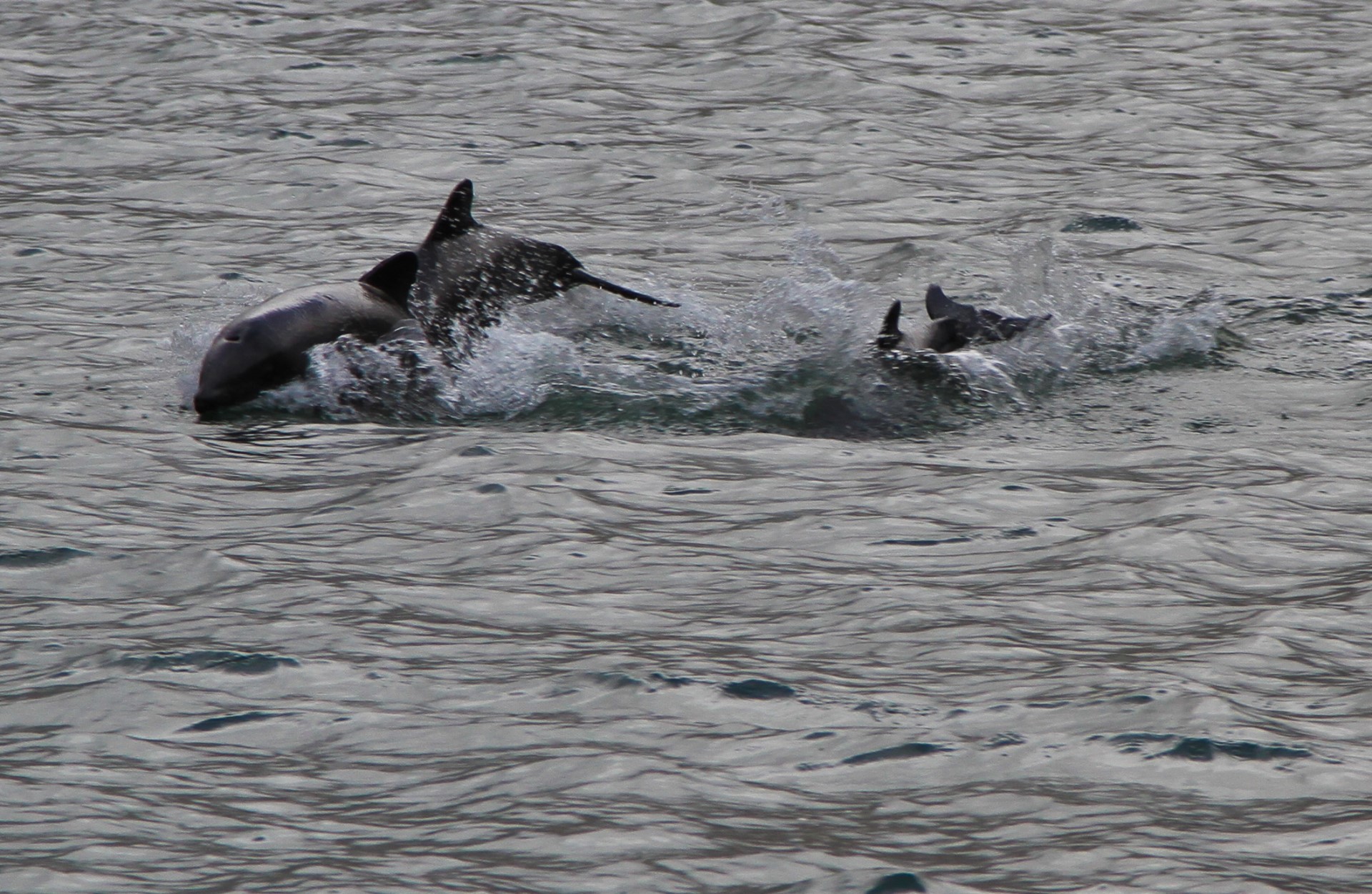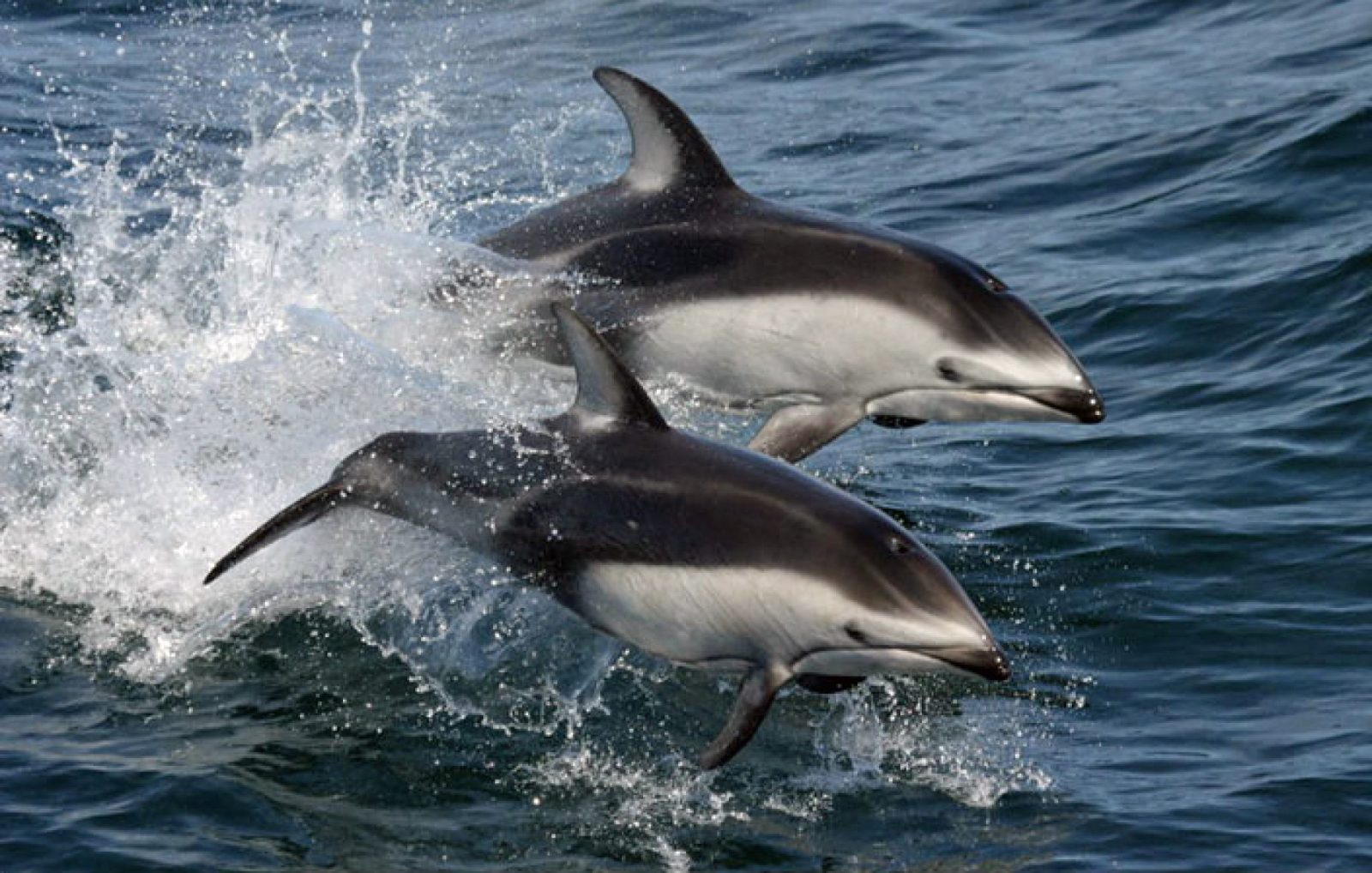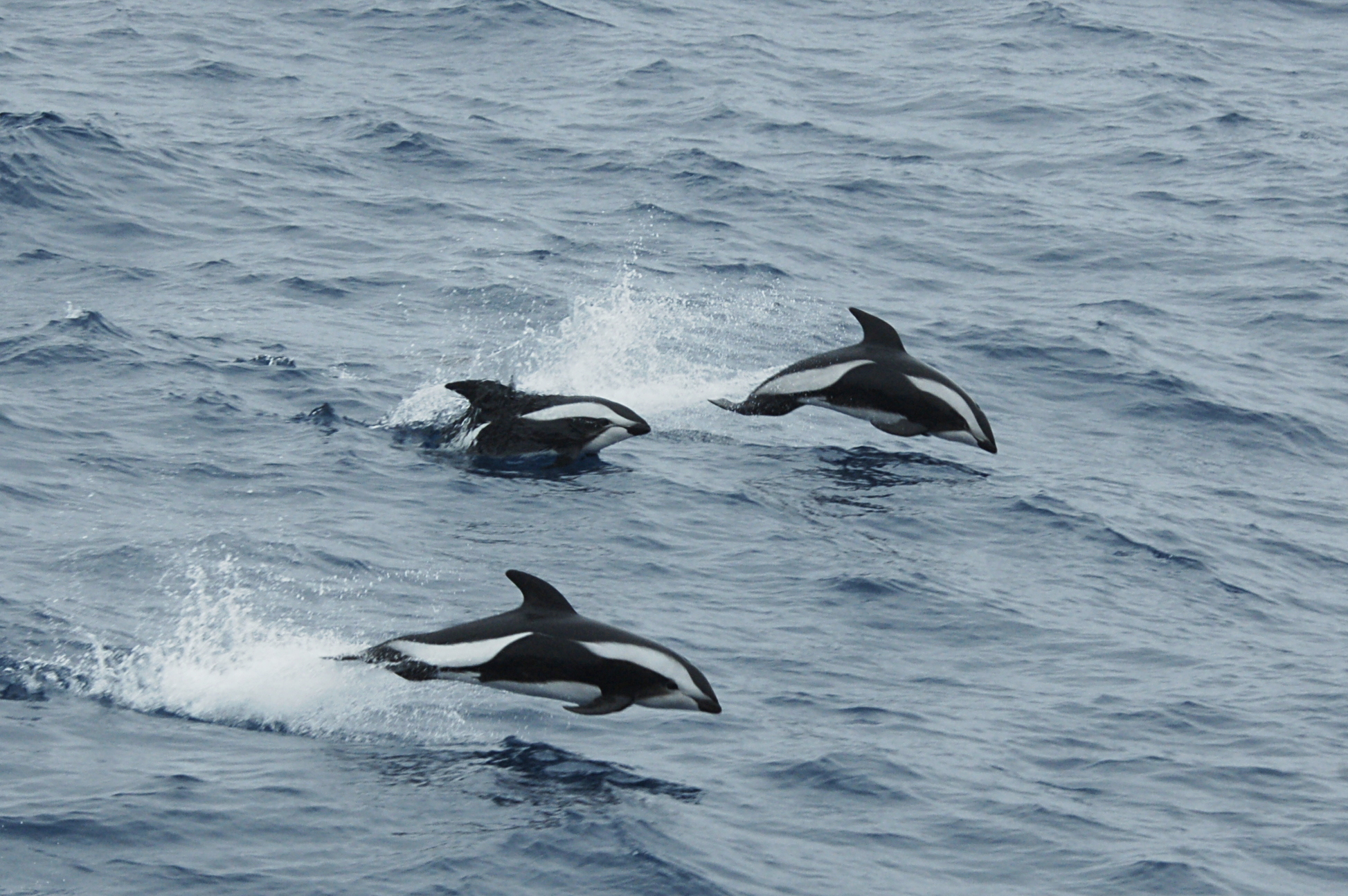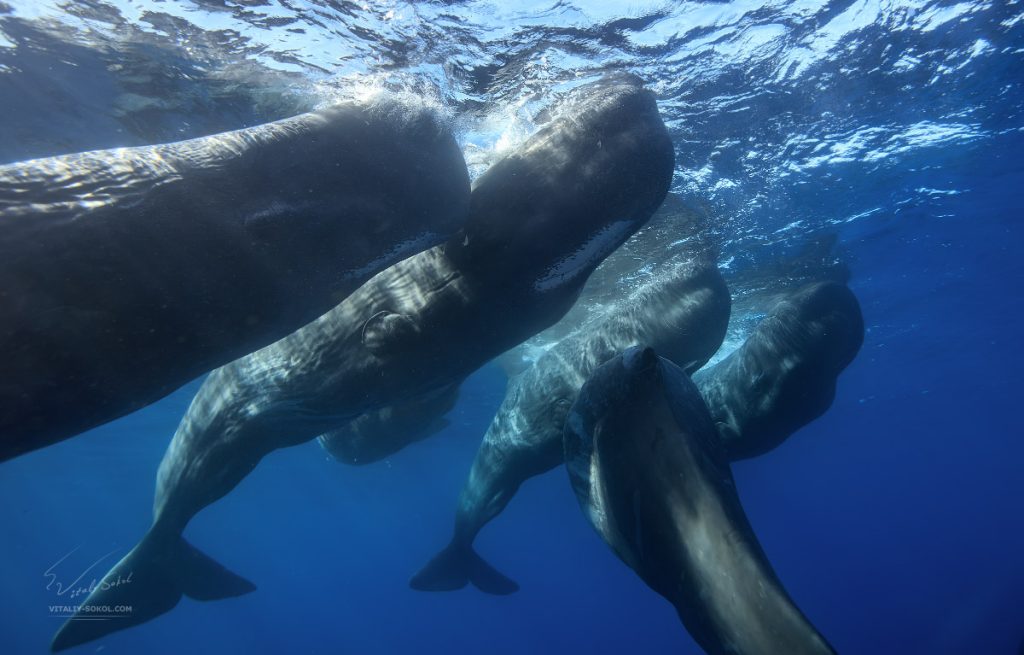
Generally, only spending time with their clan (numbering around 20,000), it seems that decisions about where to go, are made cooperatively in a democratic way.
Taking up to an hour to make the decision about the direction of travel, they can often travel in large groups making communal decisions about destination, route and speed, as well as when to feed and what to do about predators.
Some of these clans live over large areas, split by as much as thousands of kilometres, and it is thought to be akin to language forming in humans. Interestingly, these clans can share areas of the sea, but will only spend time with other members of their clan. Social units within clans, are based around the females, with each unit consisting of around 10 females with their offspring. These become very close, with other females babysitting young while their mothers make deep dives to feed – even suckling is done as a group.
The sperm whale has a brain which is thought to be larger than any other animal to ever live.
Over a million were killed for their very pure oil, between 1712 and 1982. There are thought to be around 300,000 in the worlds oceans, however, before whaling it is thought that there were 1.1 million.

